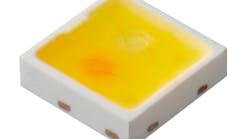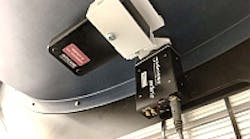A more detailed discussion of the workshop will be posted to the LEDs Magazine web site in the near future.
The workshop, hosted by DOE, with sponsors BetaLED, Echelon, Pacific Gas & Electric, and Southern California Edison, was the sixth annual DOE meeting to accelerate SSL technology advances and guide market introduction of quality SSL products.
The workshop brought together a diverse gathering of participants - from the R&D community to lighting designers and architects - to share insights, ideas, and updates on the rapidly evolving SSL market.
DOE SSL Portfolio Manager James Brodrick highlighted the 2008 SSL Lighting For Tomorrow design competition winners: Cree LED Lighting Solutions, Kichler Lighting, and Luximo. Brodrick updated the audience on the Oakland GATEWAY street lighting demonstration project, noting the efficacy and cost improvements achieved between Phase II and Phase III.
At one point, workshop participants divided into breakout sessions to review and prioritize R&D tasks in the DOE SSL R&D Multi-Year Program Plan (MYPP). The input from these breakout sessions will be used to update the MYPP and guide DOE planning for R&D solicitations.
Among the presenters were:
- Jeff Quinlan from Acuity Brands Lighting gave a keynote talk that emphasized the importance of understanding the environment and perceptions in a given lighting application, adding that quantity and color of light impacts perception.
- Eric Haugaard of Beta LED described how a manufacturer can gain value from demonstrations, and how lessons learned in Oakland, CA guided BetaLED to re-engineer the product to reduce costs.
- Kevin Dowling of Philips Color Kinetics presented a unique residential lighting installation on North Dumpling Island, located off the coast of Connecticut. (See Philips products to illuminate world's first entirely LED island-"nation".)
- Richard Karney, DOE Energy Star Program Manager, announced the first DOE Energy Star SSL products, and program plans for future expansion as LED technology continues to advance and improve. Several new lighting applications were recently added to the program, and draft criteria for replacement lamps have been released for public comment.
- Mia Paget of PNNL noted how the CALiPER program’s seven rounds of testing reveal an upward trend in efficacy of tested products. However, the range from best to worst luminaire efficacy remains wide. (See DOE releases summary results from Round 7 of Caliper testing.)
- Fred Welsh of Radcliffe Advisors described the DOE SSL Quality Advocates, a new voluntary pledge program to assure that LED lighting product performance is represented consistently and accurately. (See DOE quality program and lifecycle study will boost SSL acceptance.)
- Scott Matthews and Deanna Matthews of Carnegie Mellon University updated the DOE SSL Life Cycle Analysis study, aimed at examining energy and environmental aspects related to the manufacture, use, and disposal of SSL systems.
- Avraham Mor of Lightswitch Architectural gave insights on the challenges of specifying today's LED lighting products. Mor noted that LED system parts are different than existing technologies and present unique design challenges, and encouraged manufacturers to consider how the lamp can be changed in time.






